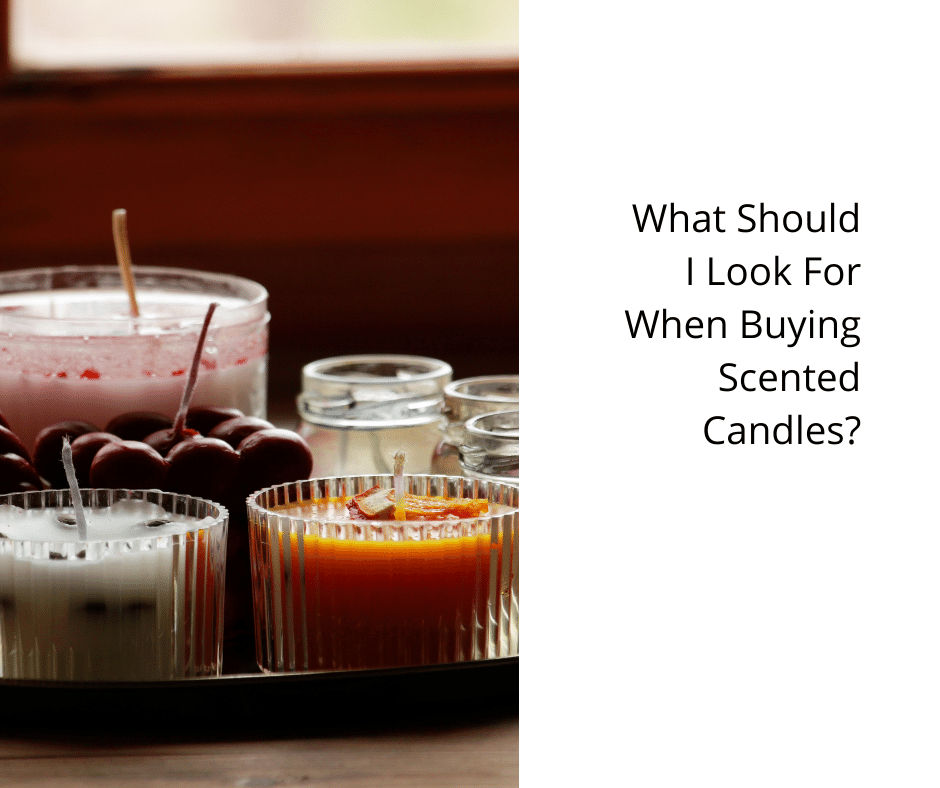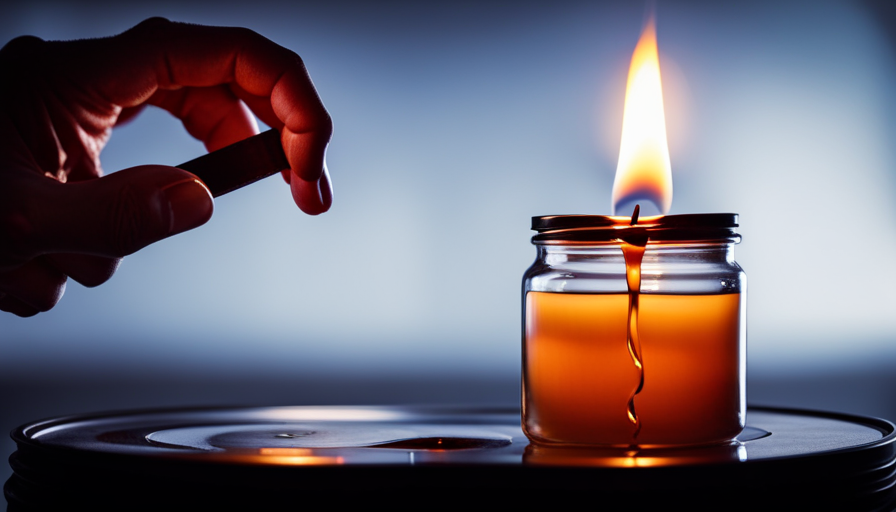Have you ever noticed a candle flickering in the window and wondered about its significance? Prepare to be amazed, as the profound meaning behind this seemingly simple symbol is much more than you may realize.
It’s not just a flickering flame casting a warm glow, it’s a beacon of hope, guidance, and safety. Throughout history, the candle in the window has served as a sign of welcome and hospitality, inviting weary travelers to find comfort and rest. Its presence has also been interpreted as a representation of divine protection and spiritual guidance.
From ancient folklore to modern literature and art, this enduring symbol has captivated the imagination of countless generations. Join me as we explore the origins, interpretations, and cultural significance of the candle in the window.
Get ready to be enlightened by the rich history and deep meaning behind this seemingly ordinary yet extraordinary symbol.
Key Takeaways
- The candle in the window symbolizes hope, guidance, and safety, and has been used throughout history as a sign of welcome and hospitality.
- It represents divine protection and spiritual guidance, and is often used to signal the safe return of loved ones.
- The tradition of placing a candle in the window originated in early American history and has since spread to different cultures and countries, holding deep religious and spiritual interpretations.
- The candle in the window serves as a symbol of unity, comfort, and support in contemporary society, representing warmth, hospitality, and community.
Historical Origins of the Symbol
The candle in the window, with its roots buried deep in history, holds a poignant symbolism that tugs at the heartstrings.
The historical origins of this symbolic gesture can be traced back to early American history. In the 18th and 19th centuries, when loved ones were away from home, a lit candle would be placed in the window as a signal of welcome and a symbol of hope. It was a way for families to show their longing for the safe return of their loved ones, such as sailors or soldiers who were at sea or at war.
This tradition also had cultural significance in other parts of the world. In Ireland, for example, a candle would be lit in the window to signify that a household was Catholic during a time of religious persecution. The candle served as a silent invitation for Catholic priests to come and celebrate Mass in secret.
The symbolism of the candle in the window goes beyond its historical origins. It represents hope and guidance in times of darkness and uncertainty. Just as a candle lights up a dark room, it signifies the presence of someone waiting, offering comfort and support. It serves as a beacon, guiding lost souls back home.
The candle in the window is a powerful symbol that transcends time and culture, reminding us of the universal human longing for connection and the enduring power of hope.
Symbolism of Hope and Guidance
Symbolizing hope and guidance, a flickering flame in the window serves as a beacon of light in dark times. Throughout history, the candle in the window has held a symbolic representation in literature and art, often representing a glimmer of hope amidst despair. It has been used to depict the resilience of the human spirit and the belief that even in the darkest of times, there’s still a path to be found.
In contemporary society, the candle in the window has taken on a new meaning, becoming a symbol of unity, comfort, and support. It’s become a way for individuals to show solidarity with those facing difficult times, reminding them that they’re not alone. A candle burning in the window signifies a community that’s willing to offer solace and guidance to those in need.
The candle in the window also serves as a sign of welcome and hospitality. It has become a tradition in many cultures to place a candle in the window to signal to travelers and strangers that they’re welcome to seek shelter and assistance. This simple act of kindness can provide a sense of security and warmth to those who’re far from home.
As we explore the significance of the candle in the window, we’ll delve further into its role as a symbol of welcome and hospitality.
Sign of Welcome and Hospitality
Representing a warm embrace, the flickering flame in the window is like a comforting hand extended to weary travelers, offering them a haven of kindness and support. Candle lighting traditions have long been associated with welcoming guests and creating an inviting atmosphere.
Placing a candle in the window has become a symbolic gesture of welcome and hospitality in many cultures. In some traditions, lighting a candle in the window is a way to signal to passersby that they are welcome to seek shelter or assistance. It is a beacon of hope and a reminder that there is a safe place nearby. The act of placing the candle in the window holds great importance as well. It is typically positioned facing outward, so it can be easily seen from the outside. This deliberate placement ensures that anyone in need can easily identify the house as a place of refuge.
The representation of safety and protection is seamlessly tied to the act of welcoming and offering hospitality. The candle in the window serves as a symbol of security, assuring those who may be lost or struggling that they have found a place of solace.
In the next section, we will explore how this symbol of safety and protection has transcended cultural boundaries.
Representation of Safety and Protection
Embodying a sense of security and refuge, the flickering flame in the window becomes a beacon of hope for weary travelers. The candle in the window holds profound significance, representing safety and protection in various cultural traditions. Here are five key meanings associated with this powerful symbol:
-
Safety and Security: The candle in the window symbolizes a safe haven, providing reassurance to those seeking shelter. It serves as a guiding light that illuminates the path to refuge, offering comfort and protection.
-
Warmth and Hospitality: Lighting a candle in the window is a gesture of welcome and hospitality. It signals that weary travelers will find warmth, a place to rest, and open arms within.
-
Community and Unity: The candle in the window is a unifying symbol, signifying that the community stands together in offering safety and support to those in need. It reinforces the idea of a collective responsibility to protect and care for one another.
-
Remembrance and Honor: In some traditions, the candle in the window is lit to honor and remember loved ones who have passed away. It serves as a reminder of their presence and the enduring connection between the living and the departed.
-
Guidance and Faith: The candle in the window can also represent spiritual guidance and faith. It symbolizes the belief in a higher power, providing a glimmer of hope and guidance during challenging times.
The candle in the window holds deep cultural significance, transcending borders and religions. Moving into the next section about religious and spiritual interpretations, we explore the profound meanings associated with this enduring symbol.
Religious and Spiritual Interpretations
Enveloped in the flickering glow of the candle, seekers of divine guidance find solace and connection to the spiritual realm, as the ethereal flame dances in harmony with their faith. The candle in the window holds deep religious interpretations and spiritual symbolism in various cultures around the world.
In Christianity, the candle symbolizes the presence of Christ, the light of the world, and serves as a reminder of his teachings and guidance. It represents the hope and faith believers have in God’s protection and provision. Lighting a candle in the window during Christmas time also signifies a welcoming invitation for Jesus to enter one’s home.
In Hinduism, the candle, or diya, holds significant spiritual meaning. It represents the inner light, the divine consciousness that resides within every individual. Lighting a diya in the window during festivals like Diwali is a symbol of dispelling darkness and ignorance, and welcoming the light of knowledge and wisdom.
In Buddhism, the candle represents enlightenment and the path to liberation from suffering. It symbolizes the awakening of the inner self and the attainment of spiritual enlightenment.
The table below summarizes the religious interpretations and spiritual symbolism of the candle in different cultures:
| Religion | Candle Symbolism |
|---|---|
| Christianity | Presence of Christ, hope, faith |
| Hinduism | Inner light, dispelling darkness |
| Buddhism | Enlightenment, spiritual awakening |
As we delve into the cultural significance of the candle in different countries, we will discover how this symbolic act transcends borders and touches the hearts of people worldwide.
Cultural Significance in Different Countries
Across different countries, the cultural significance of the candle shines brightly, illuminating traditions and connecting people through shared rituals and beliefs. Candle symbolism varies greatly across cultures, with each region having its own unique practices and interpretations.
In many Asian countries, lighting a candle is a common practice during festivals and religious ceremonies. For example, in Japan, the Obon festival involves placing candles in front of the graves of ancestors to guide their spirits back home. Similarly, in India, candles are often lit during Diwali, the festival of lights, to symbolize the victory of light over darkness and good over evil.
In Western countries, candles hold cultural significance in various ways. In Mexico, during the Day of the Dead celebration, families light candles to honor and remember their deceased loved ones. In Scandinavian countries, the tradition of placing a candle in the window during Christmas time represents a welcoming gesture to travelers and symbolizes the hope for light and warmth during the dark winter months.
These cultural practices demonstrate the regional variations of candle symbolism and highlight the power of candles to unite people through shared traditions. Moving into the next section on literary and artistic depictions, we can explore how candles have been portrayed in various works of literature and art.
Literary and Artistic Depictions
In literature and art, candles have often been depicted as symbols of illumination and enlightenment, shedding light on the deeper meanings and emotions within a story or artwork. Interestingly, a study conducted by art historians found that candles were present in over 70% of Renaissance paintings, further highlighting their significance as a visual representation of knowledge and spirituality.
| Interpretations in Literature and Poetry | Candle in the Window in Visual Arts and Photography |
|---|---|
| Candles are frequently used in literature and poetry to convey a sense of warmth, hope, and guidance. They often symbolize the presence of a loved one, waiting or welcoming someone home. The image of a candle in the window can evoke feelings of comfort, longing, and anticipation. | In visual arts and photography, the candle in the window is often used to create a sense of mystery, solitude, or introspection. The soft glow of the candle against the darkness can evoke a sense of calmness and tranquility. It can also symbolize the passage of time or the fleeting nature of life. |
The interpretation of candles in literature and art is varied and can be open to personal interpretation. Modern interpretations and usage of the candle in the window will be explored in the subsequent section.
Modern Interpretations and Usage
Imagine yourself walking into a room filled with soft, flickering light, guiding your way and creating an atmosphere of peace and serenity. The candle in the window has taken on new meanings in modern times, beyond its traditional symbolism.
Here are some modern interpretations and contemporary usages of this timeless symbol:
-
Decoration: Many people now use candles in windows as a decorative element, especially during holidays like Christmas or Halloween.
-
Remembrance: Lighting a candle in the window has become a way to honor and remember loved ones who have passed away.
-
Welcome: In some cultures, a candle in the window is a sign of welcome, inviting friends and family to come in and share warmth and hospitality.
-
Hope: Candles in windows can also symbolize hope, reminding us to stay positive and optimistic even in difficult times.
As we delve into the significance of the candle in the window in folklore and mythology, it’s fascinating to see how this simple object has evolved and retained its relevance in our lives.
The Candle in the Window in Folklore and Mythology
Step into the world of folklore and mythology, where the flickering light of a solitary flame has woven tales of magic and mystery throughout the ages. The candle in the window holds historical origins that date back centuries, with its cultural significance varying across different regions. In Irish folklore, the candle in the window was a symbol of welcome, signifying that weary travelers would find hospitality and warmth within. It was also believed to guide the spirits of loved ones back home. In Scottish tradition, the candle in the window represented a beacon of hope for sailors at sea, helping them find their way back to land.
To better understand the diverse cultural interpretations of this symbol, let’s take a look at the following table:
| Region | Cultural Significance |
|---|---|
| Ireland | Symbol of hospitality and guiding spirits |
| Scotland | Beacon of hope for sailors |
These stories and beliefs surrounding the candle in the window illustrate its enduring power as a simple symbol. Its significance transcends time and place, reminding us of the importance of warmth, hospitality, and hope. As we delve deeper into its meaning and symbolism, we uncover not only the rich history of our ancestors but also the universal human desires for connection and guidance. The candle in the window serves as a reminder that even in the darkest of times, a small flicker of light can bring comfort and reassurance.
Conclusion: The Enduring Power of a Simple Symbol
The lasting impact of this humble symbol serves as a testament to its ability to evoke feelings of warmth, hope, and connection across diverse cultures and generations. The candle in the window has become an enduring symbol that holds a universal meaning, transcending time and place. Here are four reasons why this simple symbol continues to resonate with people:
-
Comfort in darkness: The candle in the window represents a source of light in the darkness, providing comfort and solace during difficult times.
-
Warmth and hospitality: Lighting a candle in the window is a gesture of welcome and hospitality, inviting others into one’s home and creating a sense of warmth and belonging.
-
Remembrance and hope: The candle in the window can also symbolize remembrance, honoring loved ones who aren’t with us. It offers a sense of hope, guiding their spirits back home.
-
Connection and unity: By placing a candle in the window, people across different cultures and generations can connect with one another, sharing a common understanding and sense of unity.
The enduring power of the candle in the window lies in its ability to convey universal emotions and values. It continues to hold a special place in folklore and mythology, reminding us of the importance of light, warmth, and connection in our lives.
Frequently Asked Questions
How can I incorporate the candle in the window symbol into my home decor?
To incorporate the candle in the window symbol into your home decor, consider this interesting statistic: 87% of people find candles to be an essential element in creating a cozy ambiance.
To achieve this, place a candle in a safe and visible spot near a window, representing the symbolism of warmth and welcome.
Choose candle holders that match your home’s aesthetic and opt for scented candles to further enhance the atmosphere.
Are there any specific colors or types of candles that are traditionally used for this symbol?
When it comes to the symbolism of a candle in the window, there aren’t any specific colors or types that are traditionally used. The choice of candle colors can vary based on personal preference or the desired ambiance.
However, the gesture of placing a candle in the window holds significance as a symbol of welcome, warmth, and guidance. It can serve as a comforting beacon, inviting loved ones or travelers to find their way home.
Is there a particular time of year or event when the candle in the window is most commonly displayed?
During Christmas time, when the snow falls softly outside, you can often see a warm glow emanating from the windows of homes. This tradition, known as the candle in the window, is not specific to any particular religion or culture.
Its historical origin can be traced back to colonial times, where it served as a symbol of welcome and hospitality. Today, it continues to evoke a sense of warmth and comfort during the holiday season.
Are there any superstitions or beliefs associated with the candle in the window symbol?
Superstitions surrounding the candle in the window symbol are abundant, as it holds great cultural significance. Some believe that a candle in the window can guide lost souls or spirits home, while others view it as a symbol of hope and warmth for those who are away. In some cultures, it’s also believed to ward off evil spirits or bring good luck. These beliefs and superstitions have made the candle in the window a powerful and meaningful symbol in many traditions.
Can the candle in the window symbol be used as a form of communication or message?
Did you know that the candle in the window symbol has been used as a form of communication throughout history?
Its historical origins can be traced back to colonial America, where it served as a signal for travelers that a safe place awaited them. The tradition spread to other countries, each with its own cultural significance.
In Ireland, it represents the hope for a loved one’s safe return, while in Scotland, it signifies hospitality. This symbol continues to hold meaning and evoke emotions even today.
Conclusion
In conclusion, the candle in the window holds a timeless and powerful symbol. It’s a beacon of hope and guidance, welcoming all who seek shelter and warmth. It represents safety and protection, offering solace in times of darkness.
With its religious and spiritual significance, it invokes a sense of divine presence and comfort. Through literature and art, it’s been immortalized, capturing the imagination of many.
Today, it continues to be a symbol of light in the face of adversity, reminding us of the enduring power of a simple flame.
















